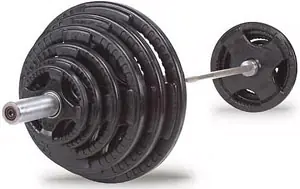As you probably already know: for a weightlifter, two indicators are of key importance - a) speed and b) strength. The speed of lifting the barbell is developed through the use of exercises that can be performed more quickly than competition. Such exercises, in particular, include special auxiliary exercises, where the amplitude of movement - and, consequently, the speed of lifting the barbell - is greater than the competitive one (for example, snatch and chest lift with a semi-squat, snatch and push rows, push push, etc.). d.).
Further development of strength and speed can only occur by increasing the weight. It is known that it is maximum effort, being the strongest irritants, that creates the prerequisites for the complete mobilization of motor elements and the activity of all body systems, to ensure the effect of “compensation over the edge.” Such efforts have a training effect, including on the central nervous system, and through their actions cause significant adaptive changes in the body. These problems need to be solved not only with the help of classical exercises.
A weightlifter must also develop the ability to make maximum efforts with the help of special auxiliary exercises, such as snatch and push lifts, squats with a barbell, deadlift, etc. Their value lies in the fact that they can (compared to classical exercises) be performed with greater weight, more times and with less nervous effort. In addition, they usually form part of a classic exercise and therefore not only develop the athlete’s strength, but also contribute to improvement in technique. Strength also largely determines speed and allows you to lift the barbell at maximum weights with greater speed, which ultimately contributes to the continuous growth of results.
However, it must be borne in mind that long-term repetition of an exercise with very large or small efforts can lead to persistent consolidation of relatively slow movements and movements with small stresses, inhibiting the manifestation of maximum efforts when lifting (lifting) the barbell at submaximal and maximum levels (95-100%) weights in competition conditions. This can ultimately lead to a slowdown in performance growth.
Post Views: 99


